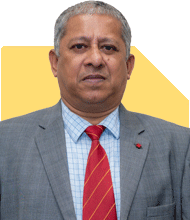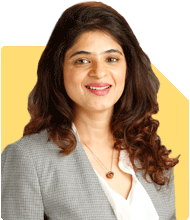39 year old with apartment, house, and 50L inv, wants to reach 10cr in MF by 53: Realistic?
Ramalingam Kalirajan |8459 Answers |Ask -Follow
Mutual Funds, Financial Planning Expert - Answered on Feb 06, 2025
He has an MBA in finance from the University of Madras and is a certified financial planner.
He is the director and chief financial planner at Holistic Investment, a Chennai-based firm that offers financial planning and wealth management advice.... more

Hi, I am 39 years old and my wife is 38 years old. I have a apartment worth 50L ( No loan), a house in bangalore worth 1.5 cr( 70 lakhs loan pending), MF and stocks around 50L as of now. I do a SIP of 1L per month and it has a 18% XIRR now ( was 23% before downturn) I will continue to stay invested. I have a Jeevan Tarun for my son and Jeevan umang as a part of my de-risking efforts which yields guaranteed income of 30k/m from age 53. My goal is to reach 10cr in MF by 53 years age. Is this goal realistic or should I invest more and be aggressive?
You own an apartment worth Rs. 50 lakh, with no loan.
You own a house in Bangalore worth Rs. 1.5 crore, with a loan of Rs. 70 lakh.
Your investments in mutual funds and stocks total Rs. 50 lakh.
You are investing Rs. 1 lakh per month through SIPs.
Your SIPs have achieved an XIRR of 18% (previously 23%).
You plan to continue investing and aim for a corpus of Rs. 10 crore by age 53.
You have Jeevan Tarun for your son and Jeevan Umang, which guarantees Rs. 30,000 per month from age 53.
Assessing Your Rs. 10 Crore Goal
Your target of Rs. 10 crore in mutual funds by age 53 is ambitious.
Your current SIPs and portfolio growth will determine if this goal is realistic.
Market fluctuations impact returns, so flexibility is essential.
Achieving an 18% CAGR consistently over 14 years is difficult.
It is possible but requires strategic asset allocation and disciplined investing.
SIP Investment Strategy
Your Rs. 1 lakh monthly SIP is a strong commitment.
Increasing SIPs gradually can improve your chances of meeting the goal.
Market downturns impact XIRR temporarily but should not alter long-term plans.
Staying invested in a well-balanced portfolio is essential.
Avoid emotional decisions based on short-term market movements.
Mutual Fund Selection for Growth
Actively managed funds have the potential to outperform passive index funds.
Fund selection should focus on quality, consistency, and long-term growth.
Diversify across large-cap, mid-cap, and flexi-cap funds for balance.
Sectoral or thematic funds should be limited to reduce risk.
Regular monitoring and rebalancing will keep your portfolio aligned with goals.
Role of Stocks in Portfolio Growth
Direct equity investments can add growth potential.
Investing in fundamentally strong stocks with a long-term vision is key.
Avoid excessive trading, as it leads to high costs and lower returns.
Regular review of stocks ensures alignment with market trends.
Combining mutual funds and stocks creates a balanced growth strategy.
Impact of Your Home Loan
You have a Rs. 70 lakh loan on your Bangalore house.
Home loans have tax benefits but also add financial burden.
Prioritising prepayment can reduce interest costs in the long run.
Balancing investments and loan repayment is important for liquidity.
Avoid diverting SIPs towards loan closure unless interest rates become unmanageable.
Jeevan Tarun and Jeevan Umang – Should You Continue?
LIC policies provide guaranteed income but offer low returns.
Your guaranteed Rs. 30,000 per month from age 53 may not beat inflation.
Surrendering and reinvesting in mutual funds can generate better long-term returns.
Evaluate surrender value and policy terms before making a decision.
A Certified Financial Planner can help restructure your insurance and investments.
Inflation Impact on Your Retirement Planning
Your Rs. 10 crore goal should consider inflation-adjusted expenses.
Future living costs will rise, affecting your financial requirements.
A higher corpus ensures a comfortable and secure retirement.
Passive income streams should be inflation-proof.
Your investment strategy must focus on wealth preservation as well as growth.
Emergency Fund and Medical Coverage
Maintaining liquidity for emergencies is essential.
An emergency fund should cover at least 12 months of expenses.
Adequate health insurance protects against unexpected medical costs.
Critical illness and term insurance should be reviewed periodically.
Your family’s financial security should not depend solely on investment returns.
Increasing Aggressiveness in Investments
If your goal of Rs. 10 crore seems difficult, increasing SIPs is an option.
Reviewing and optimising your portfolio can improve returns.
Avoid excessive risk-taking, as capital preservation is also important.
Strategic asset allocation is more effective than simply increasing risk.
Diversification across asset classes reduces volatility.
Tax Planning and Efficient Withdrawals
Capital gains tax impacts long-term investment growth.
Systematic withdrawal plans (SWP) in mutual funds offer tax-efficient income.
Asset allocation should consider post-tax returns.
Using tax-saving instruments strategically enhances wealth accumulation.
Avoid unnecessary lock-ins that restrict liquidity.
Finally
Your Rs. 10 crore goal is possible with disciplined investing and strategic adjustments.
Staying invested, increasing SIPs gradually, and optimising fund selection are key.
Evaluating insurance policies can unlock better investment opportunities.
Managing loan repayment without disrupting investments is crucial.
Inflation, taxes, and withdrawal strategies must be planned carefully.
A Certified Financial Planner can help fine-tune your financial plan for maximum efficiency.
Best Regards,
K. Ramalingam, MBA, CFP,
Chief Financial Planner,
www.holisticinvestment.in
https://www.youtube.com/@HolisticInvestment
You may like to see similar questions and answers below
Ramalingam Kalirajan |8459 Answers |Ask -Follow
Mutual Funds, Financial Planning Expert - Answered on May 17, 2024
Ramalingam Kalirajan |8459 Answers |Ask -Follow
Mutual Funds, Financial Planning Expert - Answered on Oct 19, 2024
Ramalingam Kalirajan |8459 Answers |Ask -Follow
Mutual Funds, Financial Planning Expert - Answered on Nov 25, 2024
Dr Nagarajan J S K |406 Answers |Ask -Follow
NEET, Medical, Pharmacy Careers - Answered on May 16, 2025

Based on my understanding, no one usually requests a birth certificate at this age. Your inquiry relates to the period before and after independence. In those days, they would accept the SSLC book if you didn't have a birth certificate. However, I am not sure if that was the case during your time.
Instead, you can present your Aadhaar card, which likely includes your original date of birth. You can utilize that information.
If my response doesn't fully address your concerns, I recommend consulting a Notary Public for further assistance.
BEST WISHES.
THANK YOU SIR.
with regards
Prof Suvasish Mukhopadhyay |651 Answers |Ask -Follow
Career Counsellor - Answered on May 16, 2025
Prof Suvasish Mukhopadhyay |651 Answers |Ask -Follow
Career Counsellor - Answered on May 16, 2025
Radheshyam Zanwar |1634 Answers |Ask -Follow
MHT-CET, IIT-JEE, NEET-UG Expert - Answered on May 16, 2025
Radheshyam Zanwar |1634 Answers |Ask -Follow
MHT-CET, IIT-JEE, NEET-UG Expert - Answered on May 16, 2025
Ashwini Dasgupta |107 Answers |Ask -Follow
Personality Development Expert, Career Coach - Answered on May 16, 2025
Ramalingam Kalirajan |8459 Answers |Ask -Follow
Mutual Funds, Financial Planning Expert - Answered on May 16, 2025
Ramalingam Kalirajan |8459 Answers |Ask -Follow
Mutual Funds, Financial Planning Expert - Answered on May 16, 2025
Milind Vadjikar |1236 Answers |Ask -Follow
Insurance, Stocks, MF, PF Expert - Answered on May 16, 2025
Milind Vadjikar |1236 Answers |Ask -Follow
Insurance, Stocks, MF, PF Expert - Answered on May 16, 2025























